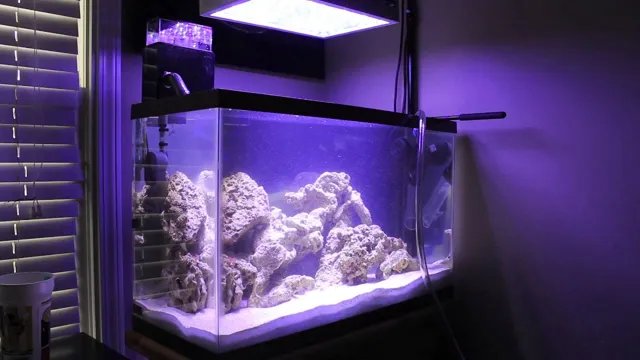
The question on many new aquarium owners’ minds is: How often should you do water changes in a saltwater aquarium? Deciding the right frequency can feel overwhelming, especially with all the conflicting information out there. I’m here to break it down for you, so let’s dive in!
Why Water Changes Matter
If you’re wondering why water changes are so crucial, think of your saltwater aquarium as a mini-ecosystem. In nature, water is continuously filtered and replaced through rain and streams. In your aquarium, the water can accumulate waste, uneaten food, and other harmful substances. Regular water changes help to remove these contaminants, keeping the water safe and healthy for your aquatic pets.
Moreover, changing the water helps to maintain stable parameters like salinity, pH, and nitrate levels. These factors can greatly affect the health of your fish and corals. When you do regular water changes, you’re effectively hitting the “reset” button on your aquarium’s environment. It’s a bit like giving your fish a spa day, making sure they’re happy and thriving!
How Often Should You Change the Water?
Determining the frequency of water changes can depend on various factors such as the size of your aquarium, the number of fish, and the type of filtration system you have. Here’s a general guideline:
- Small Aquariums (less than 20 gallons): Aim for a 10-15% water change every week.
- Medium Aquariums (20-50 gallons): A 10-15% water change every two weeks is typically sufficient.
- Large Aquariums (over 50 gallons): You can change 15-20% of the water every 2-4 weeks, depending on the bio-load.
Remember, these are just starting points! You might need to adjust these percentages based on how your aquarium is doing. For example, if you notice higher nitrate levels, a slightly more frequent change might be necessary.
Signs Your Aquarium Needs a Water Change
You might be wondering how to tell when it’s time for a water change. Here are some common signs to look out for:
- Cloudy Water: If you notice your water looking murky, it’s a clear sign that it needs refreshing.
- High Nitrate Levels: If you test your water and find the nitrates are climbing, it’s time to do a change.
- Algae Growth: Excessive algae might mean that waste is building up in the water.
Honestly, keeping an eye on these signs can save you a lot of trouble down the road. Regular testing with a water testing kit can help you stay ahead of these issues, keeping your aquarium in tip-top shape.
How to Perform a Water Change
Doing a water change isn’t as complicated as it sounds. Here’s a step-by-step guide you can follow:
1. Gather Your Supplies: You’ll need a siphon (gravel vacuum), a clean bucket, and dechlorinated water (saltwater mix).
2. Turn Off Equipment: Make sure to switch off any equipment like filters and heaters before you start.
3. Siphon the Water: Use the siphon to remove the desired amount of water from the bottom of the tank — this also helps remove leftover debris and waste.
4. Replace with New Water: Mix your saltwater according to the packaging instructions and add it back into the tank slowly.
5. Turn Equipment Back On: Once you’ve replaced the water, turn your equipment back on and check to ensure everything is functioning properly.
This process might sound tedious at first, but soon it’ll become part of your regular aquarium routine!
Special Considerations for Different Aquariums
The exact frequency and percentage of water changes can differ depending on the specific setup of your aquarium. Let’s break it down a bit further:
– Fish-Only Tanks: These typically need less frequent changes compared to reef tanks, as they’re less sensitive to changes in water chemistry.
– Reef Tanks: With corals and other delicate organisms, frequent water changes can often be beneficial. You might find yourself doing smaller, more frequent changes.
– FOWLR (Fish Only With Live Rock): These will also require regular changes to maintain balance, as the live rock helps filter the water biologically.
Understanding these nuances will help you cater to the specific needs of your aquarium and its inhabitants.
Common Mistakes to Avoid
Even seasoned aquarium keepers make mistakes! Here are a few common pitfalls to watch out for:
– Changing Too Much Water: Removing too much water at once can shock your fish and disrupt the delicate balance.
– Not Matching Temperature: If the new water isn’t at the same temperature as the tank, it can stress your aquatic friends. Always check first!
– Skipping Water Tests: Sometimes, it’s easy to forget to test your water parameters regularly. Make it a habit!
Avoiding these mistakes can help keep your aquarium healthier and your fish happier.
Performing regular water changes in a saltwater aquarium is essential for keeping your aquatic environment healthy. While it may seem overwhelming at first, understanding the right frequency and how to do it can make a world of difference. Whether you’re a beginner or looking to sharpen your skills, remember that each water change is an investment in the well-being of your underwater friends.
So, gather those supplies and get ready to treat your aquarium to a spa day! Your fish will thank you for it. Happy fish-keeping!
